RADIUM AGE ART (1906)
By:
March 5, 2024
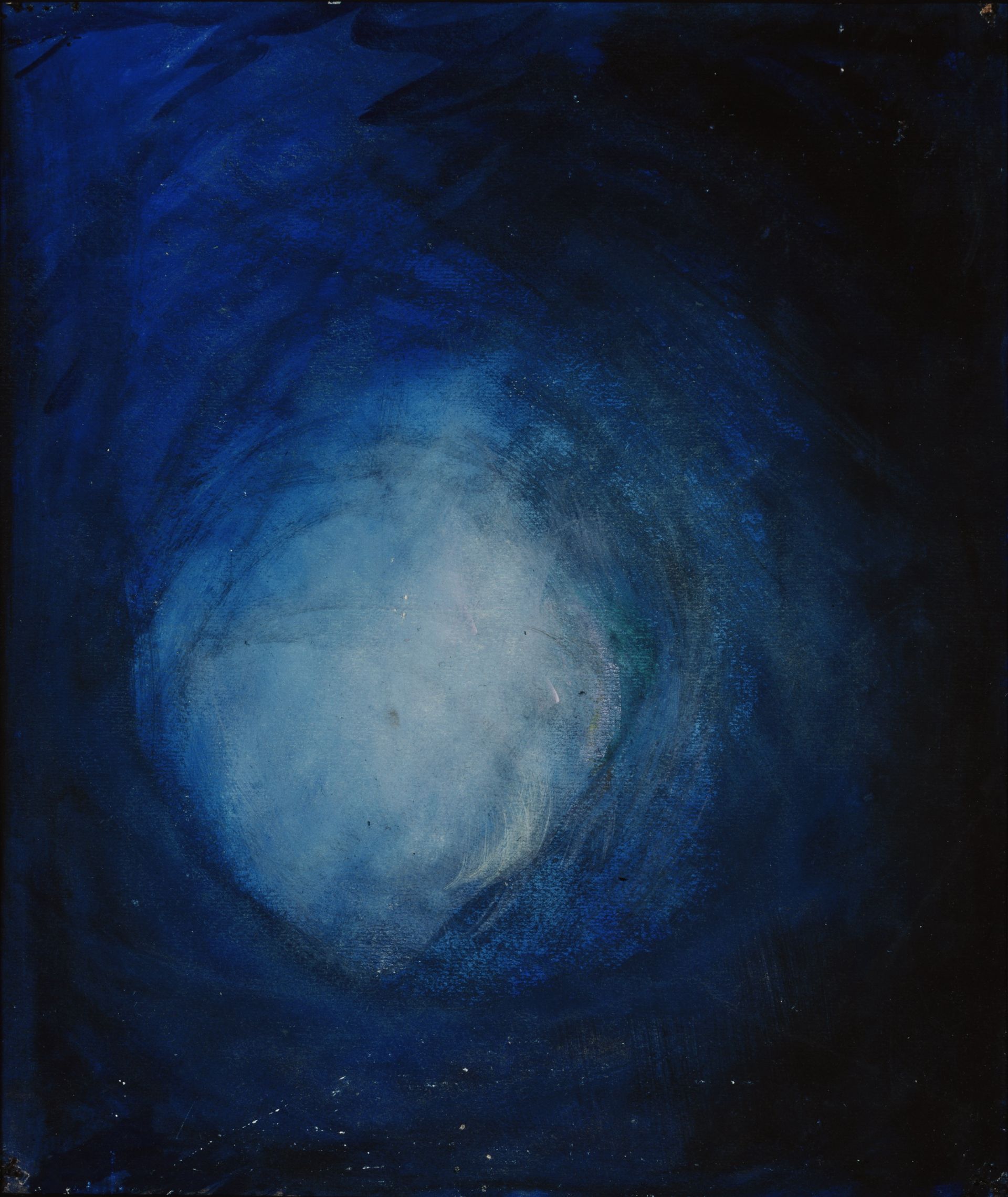
A series of notes regarding proto sf-adjacent artwork created during the sf genre’s emergent Radium Age (1900–1935). Very much a work-in-progress. Curation and categorization by Josh Glenn, whose notes are rough-and-ready — and in some cases, no doubt, improperly attributed. Also see these series: RADIUM AGE TIMELINE and RADIUM AGE POETRY.
RADIUM AGE ART: 1900 | 1901 | 1902 | 1903 | 1904 | 1905 | 1906 | 1907 | 1908 | 1909 | 1910 | 1911 | 1912 | 1913 | 1914 | 1915 | 1916 | 1917 | 1918 | 1919 | 1920 | 1921 | 1922 | 1923 | 1924 | 1925 | 1926 | 1927 | 1928 | 1929 | 1930 | 1931 | 1932 | 1933 | 1934 | 1935 | THEMATIC INDEX.
Death of Cézanne.
Considered the final year of Neo-impressionism.
The Gauguin Retrospective in Paris, in 1906, will exert a huge influence on the French avant-garde — especially on Picasso. The first group exhibition by Die Brücke, in Dresden, also takes place this year.
Between 1906 and 1915, Hilma af Klint (until a few years ago a largely unknown Swedish artist and mystic) along with Anna Cassel and other female collaborators would create 193 mostly abstract compositions. Note that this was some years before Kandinsky, Malevich and others “broke through” to fully abstract painting. During 1906, the first of the Primordial Chaos series paintings were created. More info below.
In 1906 Juan Gris, Amedeo Modigliani, and Gino Severini arrive in Paris.
Discovery of African art.
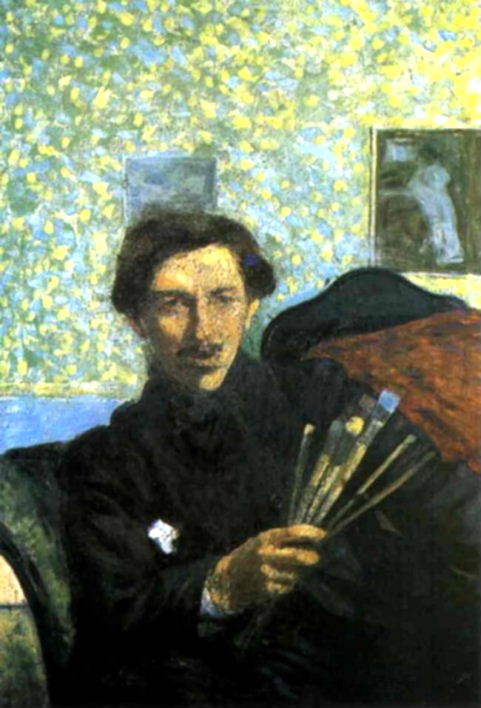
Percival Lowell’s Mars and its Canals (1906) presents a popular version of the astronomer’s position — first posited in 1895 — that Mars is a habitable planet.
The California earthquake of April 18, 1906 will rank as one of the most significant earthquakes of all time.
In France, Romanian inventor Traian Vuia becomes the first person to achieve an unassisted takeoff in a heavier-than-air powered monoplane, but it is incapable of sustained flight. Later the same year, an aeroplane of Alberto Santos-Dumont takes off at Bagatelle in France, and flies 60 meters — the first officially recorded powered flight in Europe.
Xerox is founded in Rochester, New York as the Haloid Photographic Company.
HMS Dreadnought is launched, sparking a naval race between Britain and Germany. Also, the first Imperial German Navy submarine, U-1, is launched.
See: RADIUM AGE: 1906
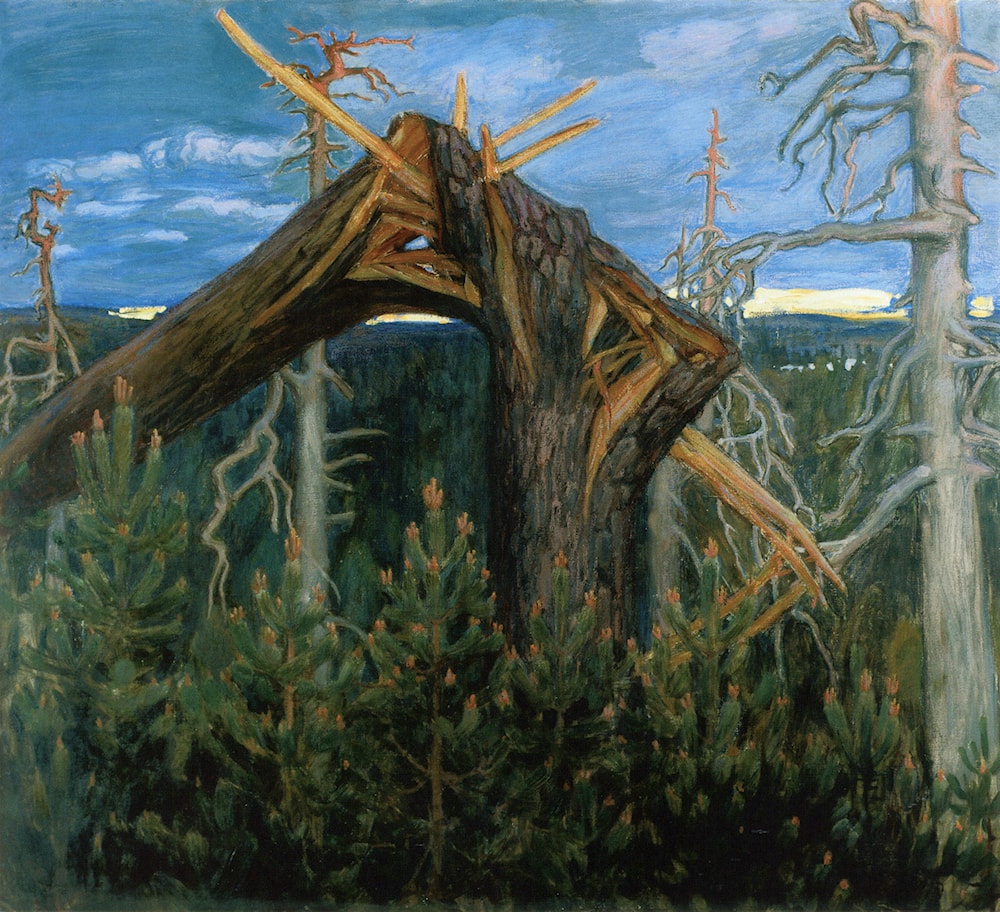
Akseli Gallen-Kallela’s “Broken Pine” (1906) was painted a year after a general strike in Finland. A severed trunk surrounded by healthy saplings symbolizes Finland’s resistance to Russian repression.

The Theosophical idea of a primeval field of energy spreading through the first movement of the universe is apparent in this painting in particular. See 1905 installment for more info on this series of paintings.
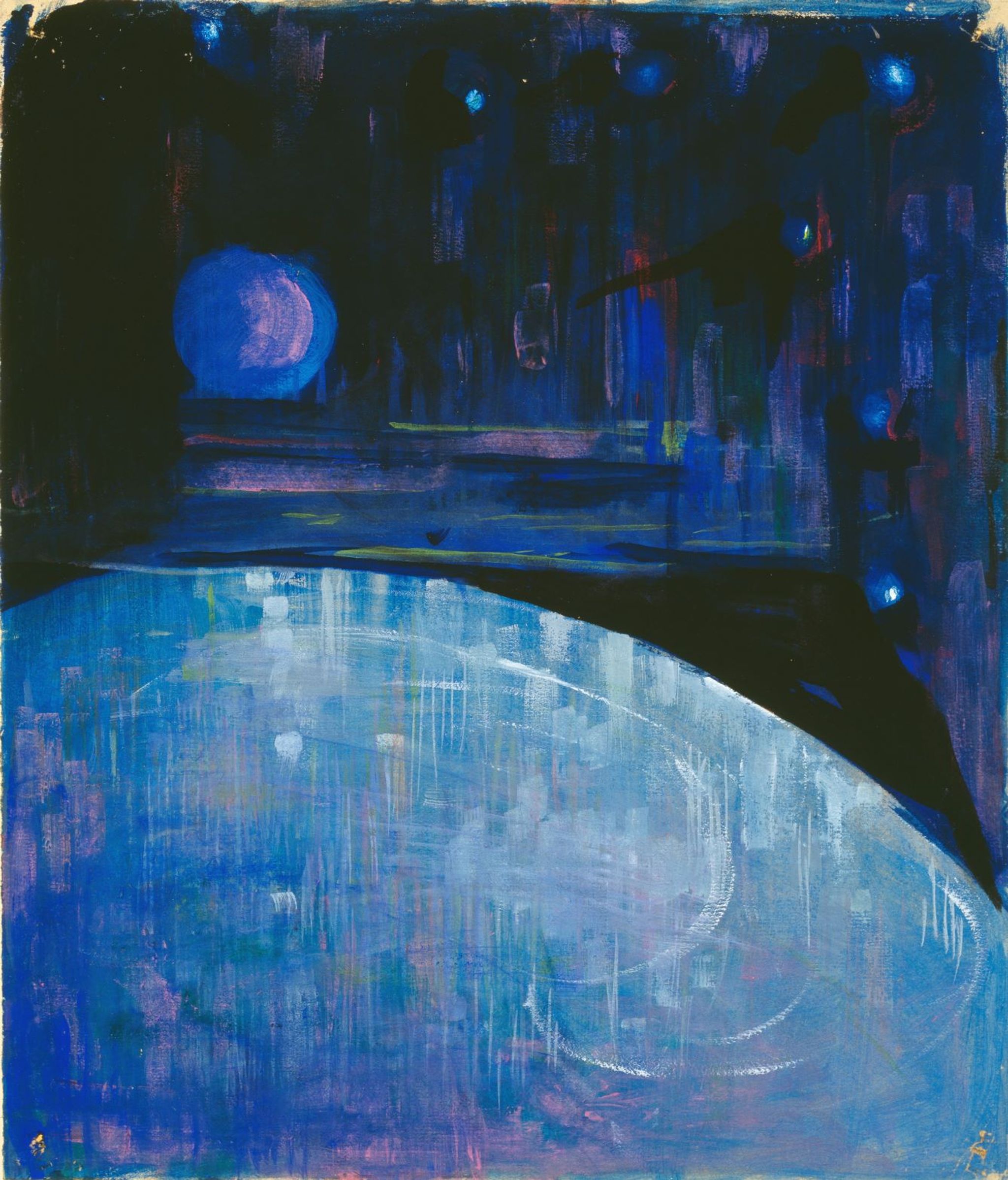
Depicts a frozen planet developed out of the nebular mist, fully-formed but lifeless.
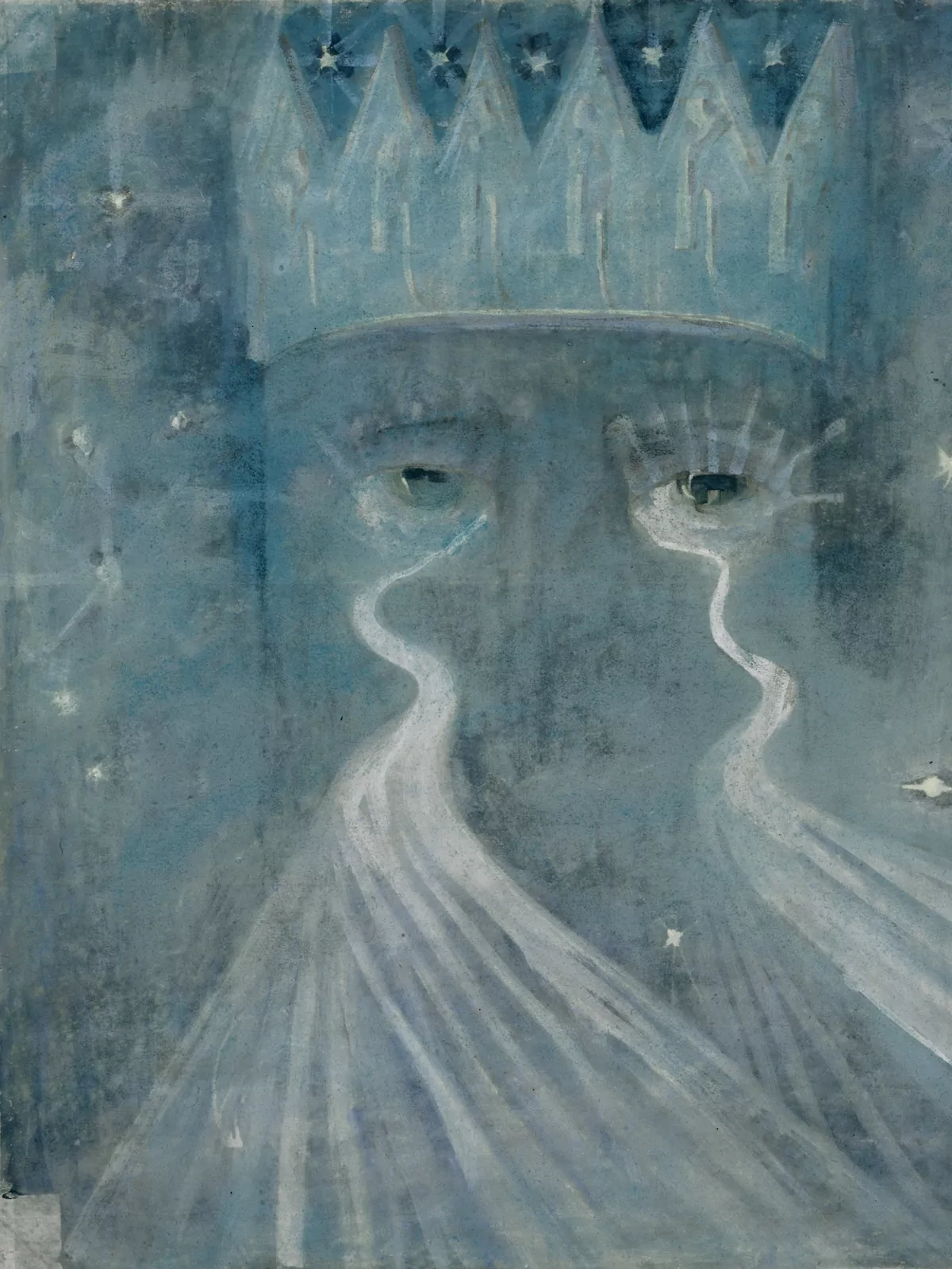
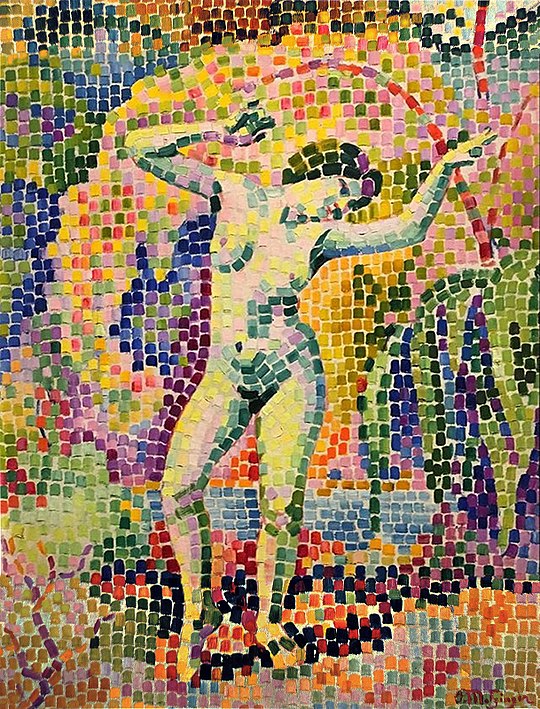
A pre-Cubist or Proto-Cubist work executed in a highly personal Divisionist style during the height of the Fauve period. The depth of field is flattened; the foreground blending in with background components.
“Artists of the years 1910-1914, including Mondrian and Kandinsky as well as the Cubists”, writes art historian Robert Herbert, “took support from one of [Metzinger’s] central principles: that line and color have the ability to communicate certain emotions to the observer, independently of natural form.”
Gino Severini and Piet Mondrian would develop a similar mosaic-like Cubo-Divisionist technique (1909–1911). Under the influence of Severini, the Futurists later (1911–1916) would incorporate the style into their “dynamic” paintings and sculpture.
The art critic Louis Chassevent’s use of the term “cube” to describe the 1905–1907 work of Robert Delaunay and Jean Metzinger (who brings “precision to the cutting of his cubes of color which appear to have been fabricated by machine”) would later be taken up by Louis Vauxcelles to baptize Cubism.
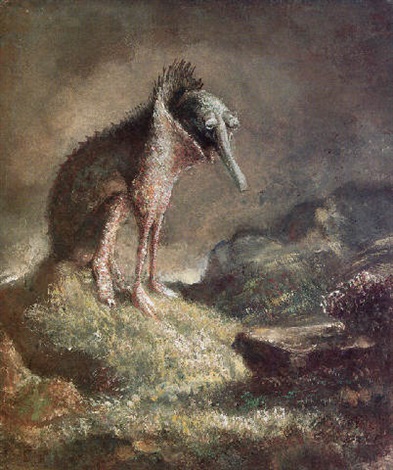
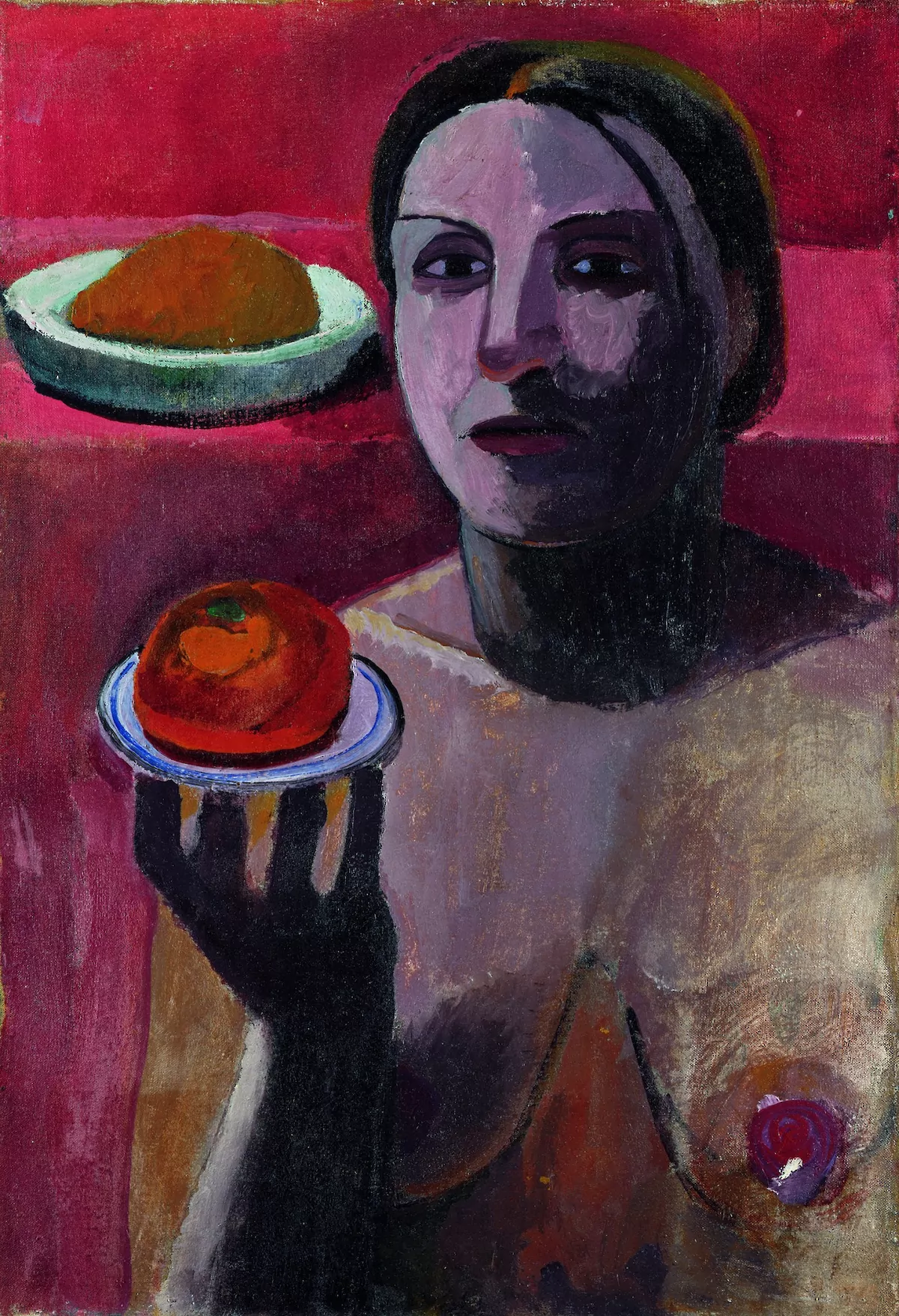
A 2013 book about Modersohn-Becker is subtitled “The First Modern Woman Artist.”
At the threshold of modernism Paula Modersohn-Becker risked everything in order to become “something.” Who she became was a daring innovator of gender imagery — the first modern woman artist to challenge centuries of traditional representations of the female body in art. Before Modersohn-Becker (1876-1907), no woman artist painted herself nude, or mothers nude, or girls nude. Not only did she reconfigure the nude, but she also resituated still-life painting. She arranged it in the kitchen as a site of domestic practice and the tasks of meal preparation. Given her originality, her long friendship with the great lyric poet Rainer Maria Rilke, and her reputation among contemporary artists, it is surprising that she is not better known in the United States. One reason may be her untimely death. In 1907, not long after painting her revolutionary nudes and giving birth to her first and only child, Modersohn-Becker died, age thirty-one, unknown, and ahead of her time.

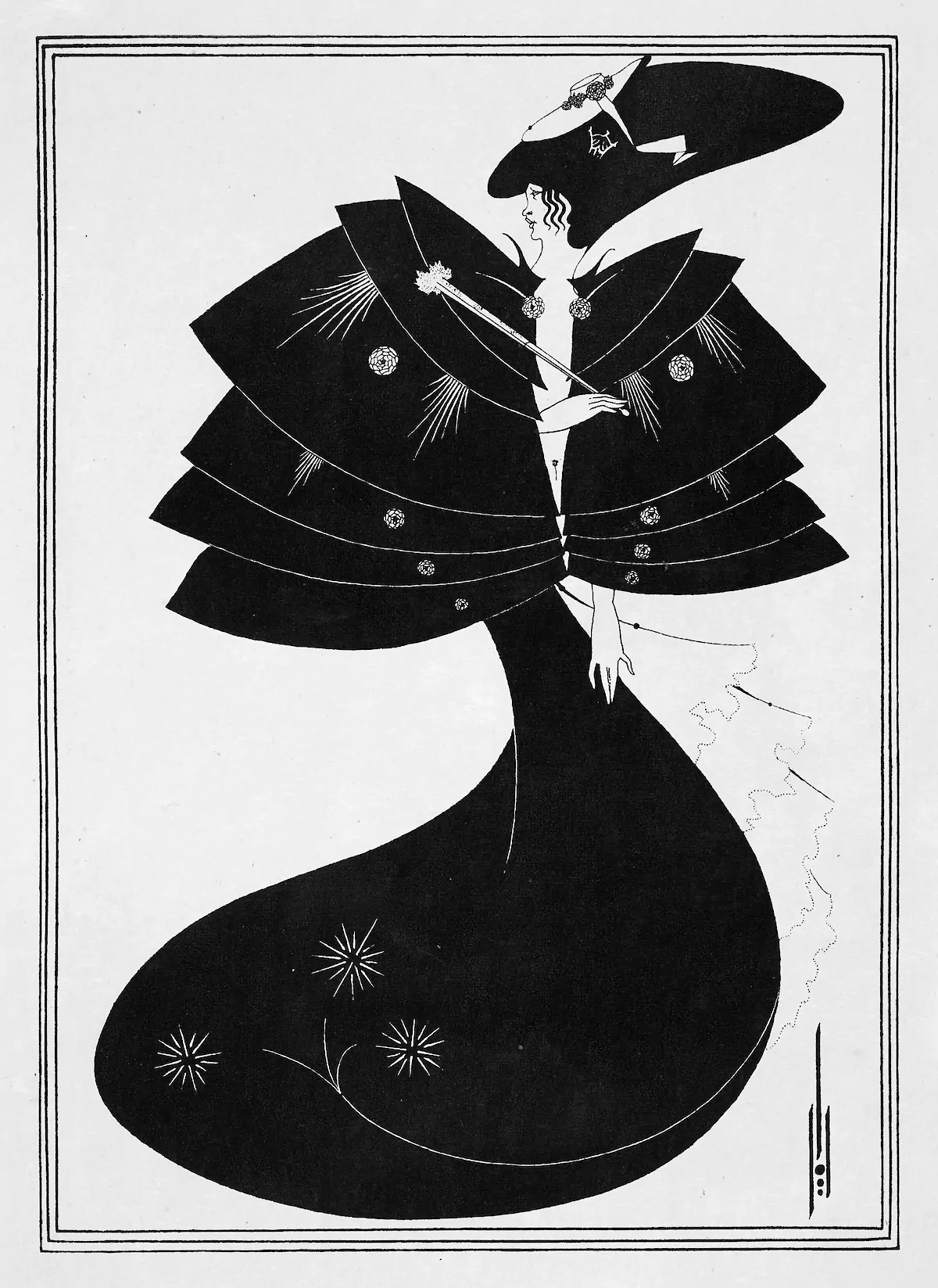
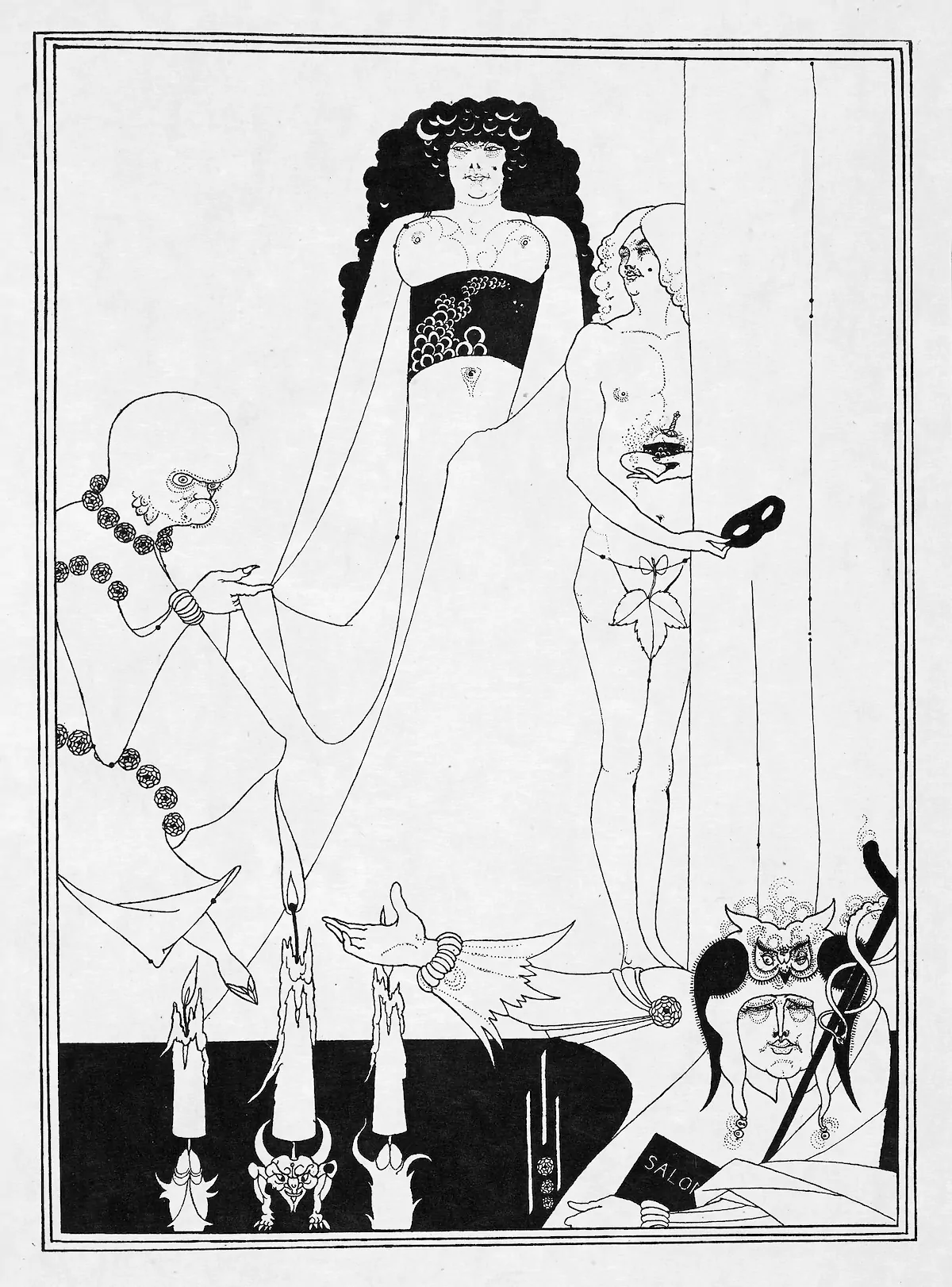
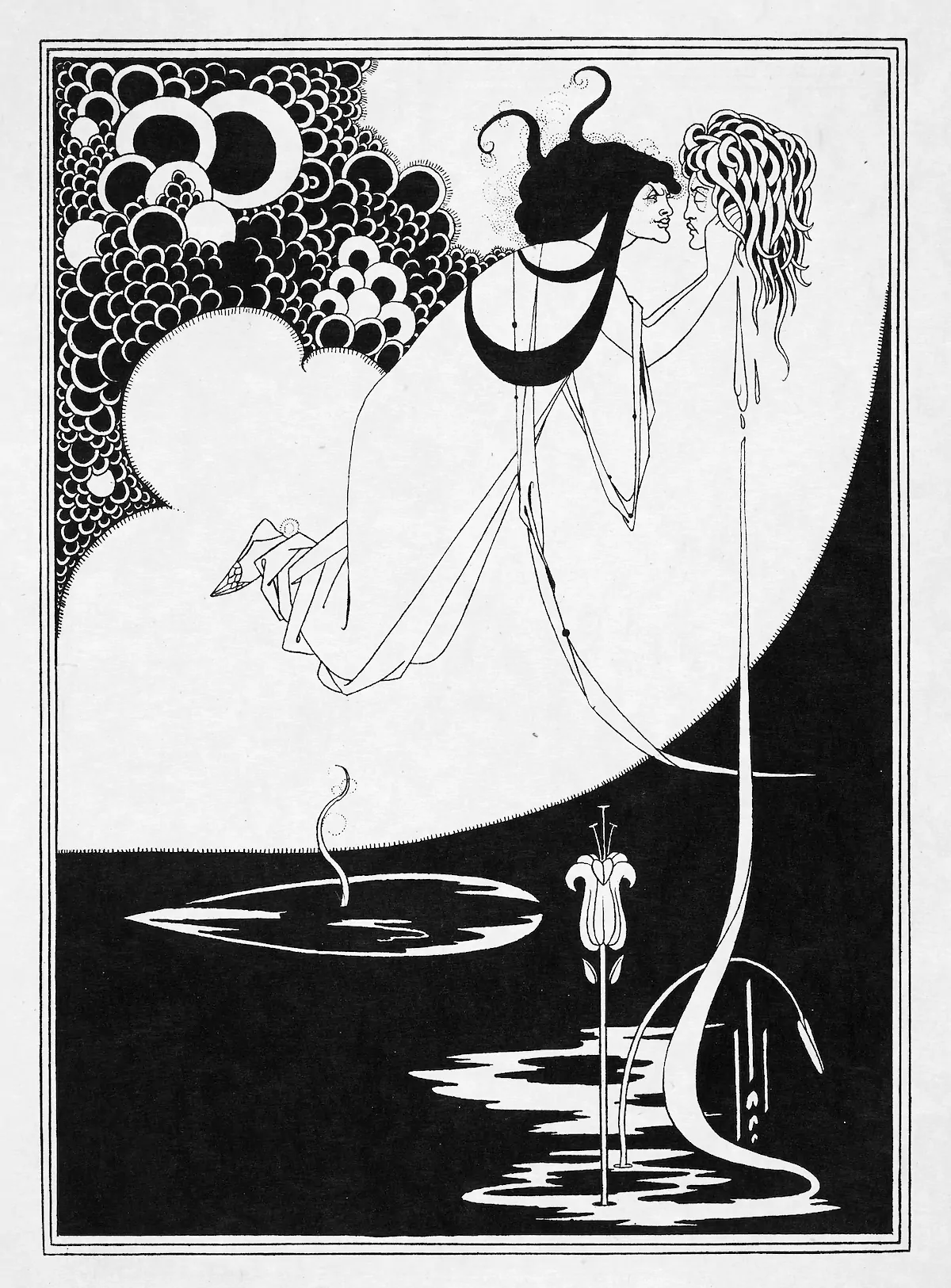
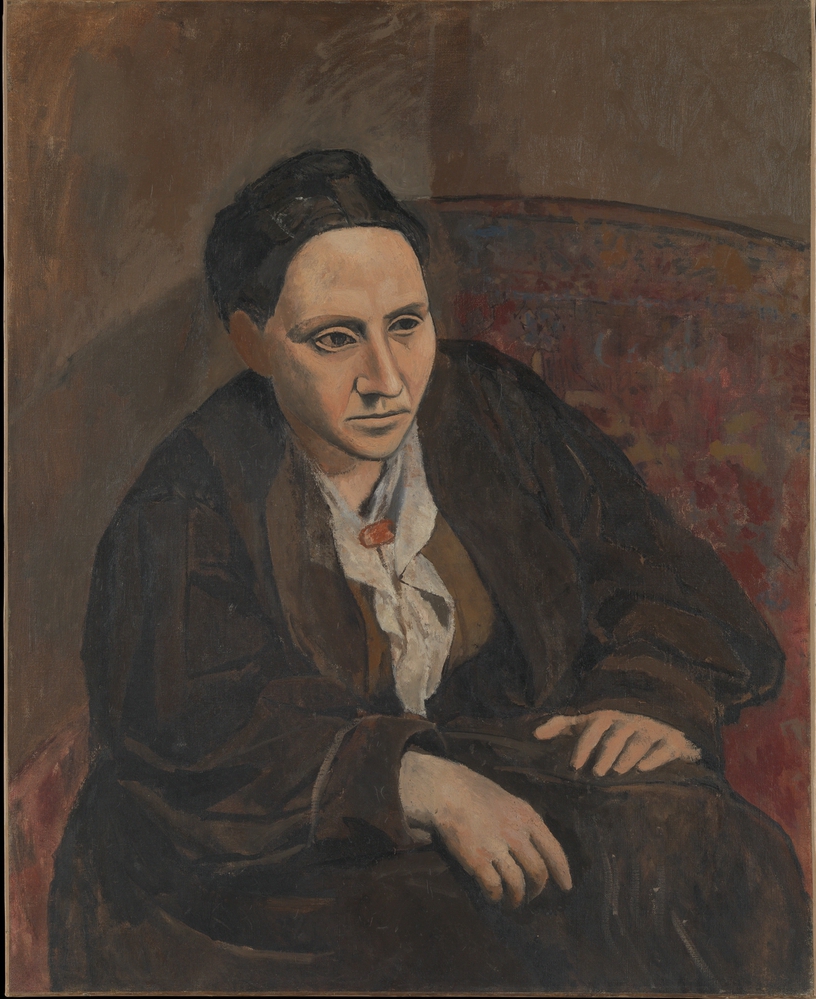
Represents a significant transitional step in the artist’s move towards Cubism. Although the original style of the portrait had been naturalistic, comparatively soft and flat, Stein’s physical details are not depicted realistically — her face has a mask-like appearance, with geometric features. Stein said of the portrait, “I was and I still am satisfied with my portrait, for me, it is I, and it is the only reproduction of me which is always I, for me.”
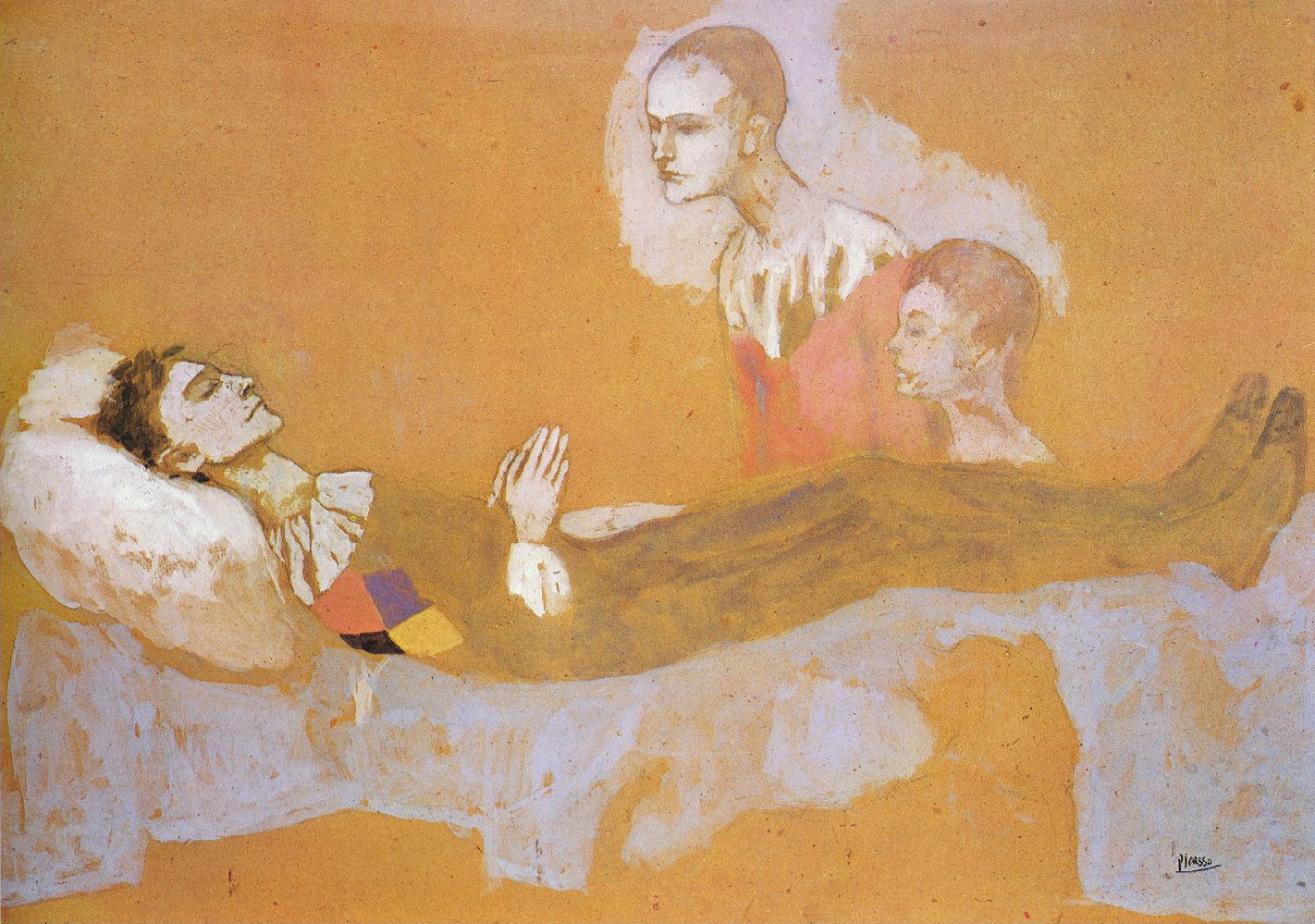
There’s something very Man-Who-Fell-to-Earth about Picasso’s Harlequin….
Also consider Louis MacNeice’s decline-of-the-west poem “An Eclogue for Christmas” — from The American Review (May 1934). One section of which laments Picasso’s journey from (relative) naturalism “in the childhood of the century” to Cubism and abstraction like so:
A. Jazz-weary of years of drums and
Hawaiian guitar,
Pivoting on the parquet I seem to have
moved far
From bombs and mud and gas, have
stuttered on my feet
Clinched to the streamlined and butter-
smooth trulls of the elite,
The lights irritating and gyrating and
rotating in gauze –
Pomade-dazzle, a slick beauty of
gewgaws –
I who was Harlequin in the childhood of the
century,
Posed by Picasso beside an endless
opaque sea,
Have seen myself sifted and splintered in
broken facets,
Tentative pencillings, endless liabilities, no
assets,
Abstractions scalpelled with a palette-knife
Without reference to this particular life,
And so it has gone on; I have not been
allowed to be
Myself in flesh or face, but abstracting and
dissecting me
They have made of me pure form, a symbol
or a pastiche,
Stylised profile, anything but soul and flesh:
And this is why I turn this jaded music on
To forswear thought and become an
automaton.
In this modern pastoral, the city dweller A and the country dweller B reflect on the limitations of their environments. Neither is contented: For A, city life has become “a morose routine,” while for B “things draw to an end, the soil is stale.” In the book Aestheticism and Modernism we read: “A’s review of modern art registers the shortfall between the formal advances of artists like Pablo Picasso and the spiritual implications of their work. […] MacNeice extrapolates a sense of the self as being ‘sifted and splintered’ into a metaphor for modernity. The ‘broken’ appearance of the human subject in Picasso’s paintings symbolizes a deeper cultural shift in which the individual has become increasingly tenuous, or ‘Tentative.'”
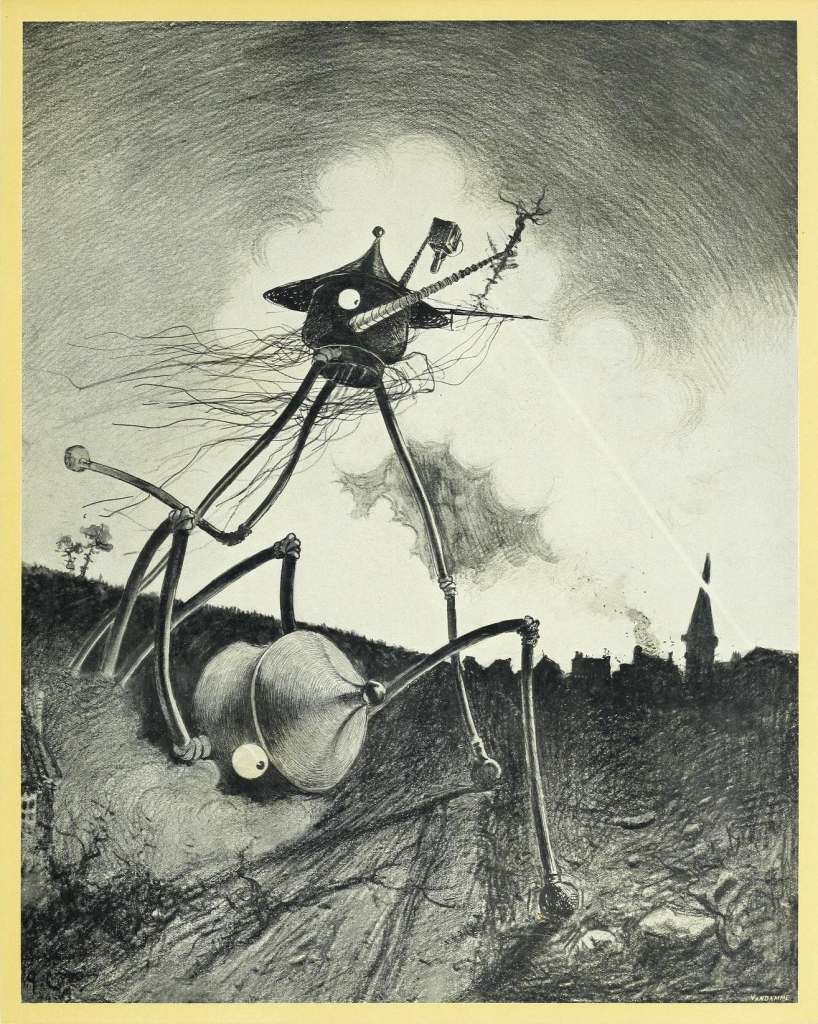
Not fine art, but I wanted to include this illustration here. See this website for more of this extraordinary work.
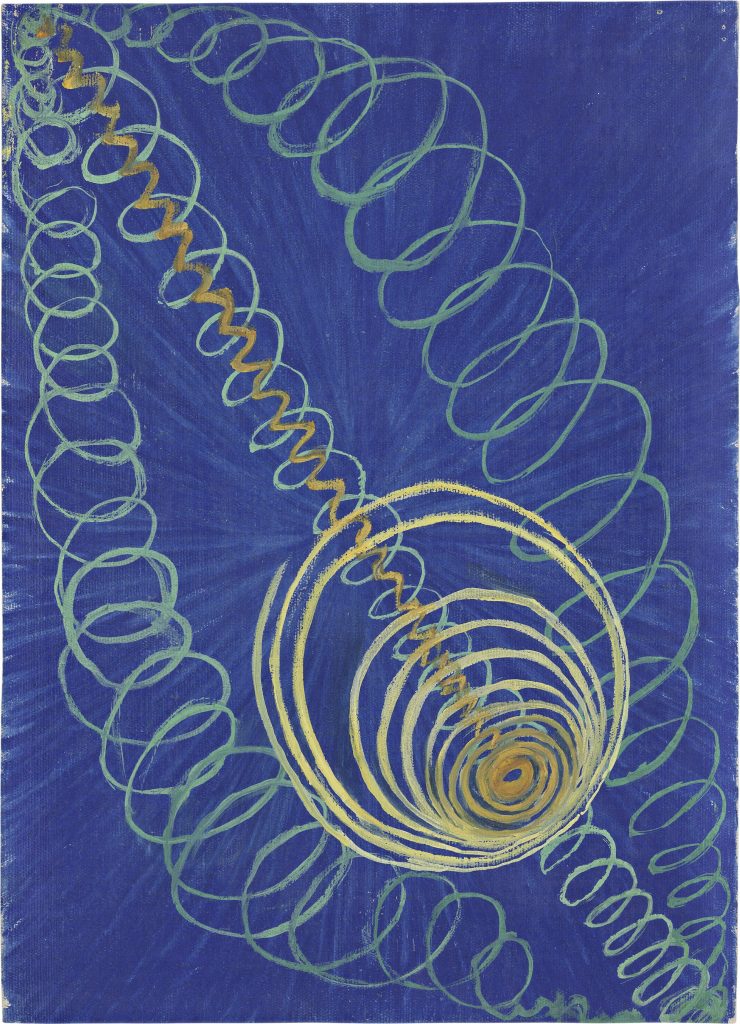
More info on Klint and this series below. See Klint (et al.) paintings via Wikimedia.
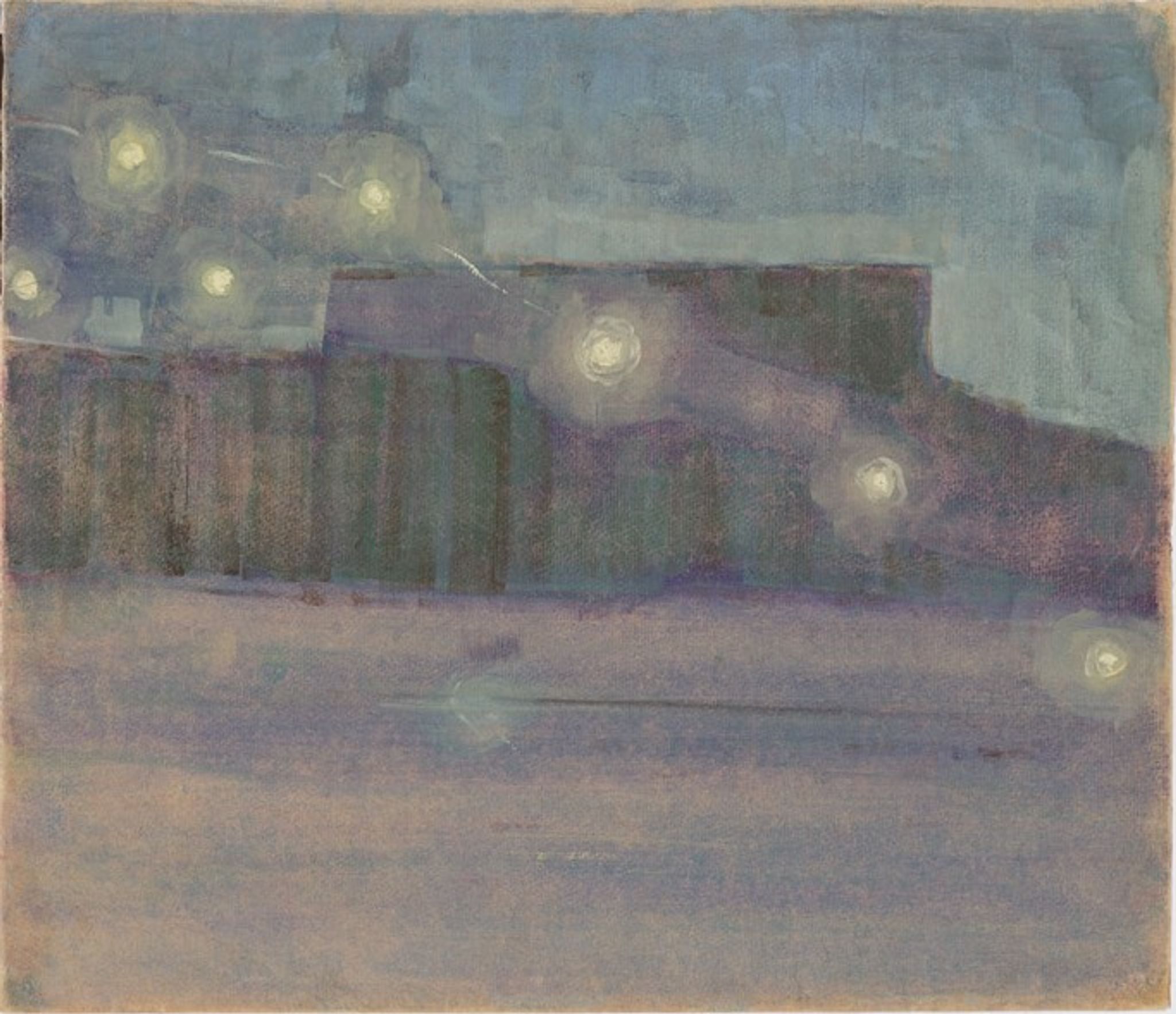
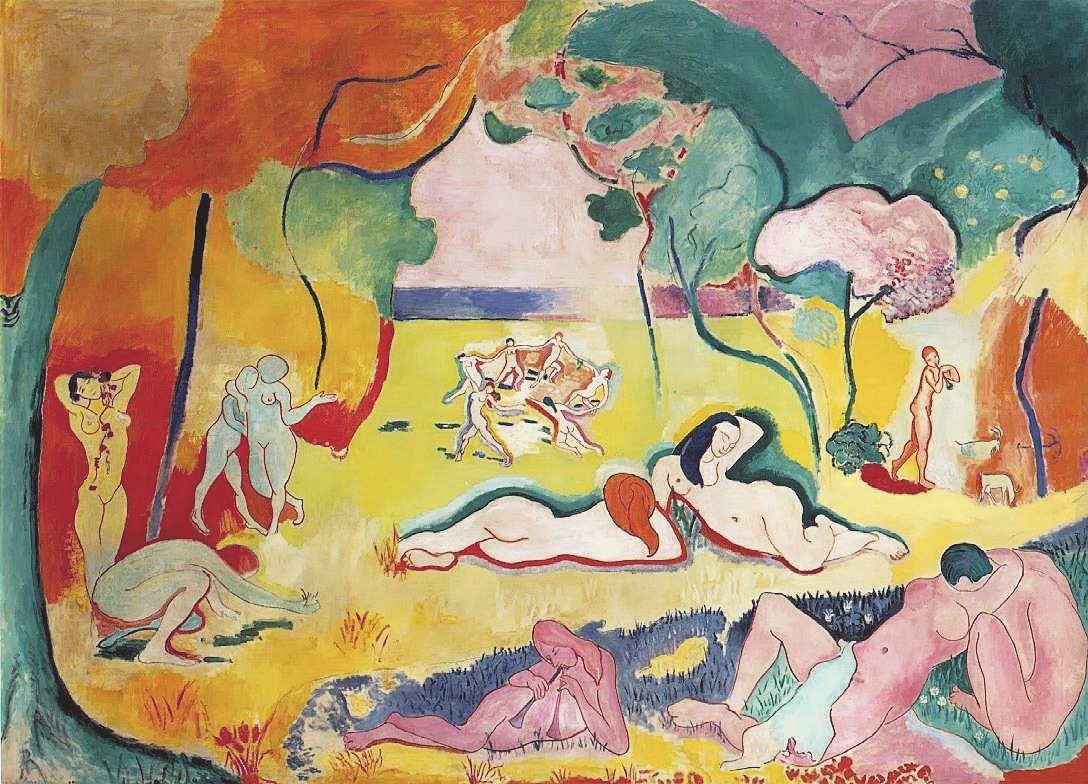
First exhibited at the Salon des Indépendants of 1906, where its cadmium colors and spatial distortions caused a public expression of protest and outrage; was this the end of French painting? (This painting seems to be Matisse’s considered response to the hostility his Fauvist work had met with in the Salon d’Automne in 1905.) Along with Picasso’s Les Demoiselles d’Avignon, which was directly inspired by this painting, Le bonheur de vivre is regarded as one of the pillars of early modernism.
NOTES ON KLINT
In 1896, Hilma af Klint and Anna Cassel formed a spiritualist group called De Fem (the Five); its three other members were Sigrid Hedman, Mathilda Nilsson and Cornelia Cederberg. The five women conducted séances, made automatic drawings together, and attempted to communicate with other worlds. Rituals led them to attempt to commune with spirits they called High Masters. A gifted medium, Cassel — who would also join the Theosophical Lodge of Stockholm in 1904— soon came to dominate the group.
Af Klint was possessed by “dual interests in the scientific discoveries of her time and the mysteries of the spiritual world” (as a 2023 New York Times story puts it). Which led her to Rudolf Steiner’s Anthroposophical Society. Convinced that the High Masters wanted her to create paintings, using an inventive geometric visual language (grids, circles, spirals and petal-like forms — sometimes diagrammatic, sometimes biomorphic) uniquely capable of depicting invisible forces both of the inner and outer worlds, af Klint withdrew from the Five in order to begin this work.
“The pictures were painted directly through me,” af Klint would write, “without any preliminary drawings and with great force.” Having studied studying the densely written notebooks of af Klint and Cassel, Hedvig Martin, a history Ph.D. in Amsterdam, has recently concluded that Cassel (whom Martin believes was af Klint’s lover) painted half of the “Primordial Chaos” series, a procession of images meant to illustrate the birth of the world and the dualities of life. Scholars have also suggested that several paintings attributed to af Klint may have been painted by Cassel and other members of their collective.
Titled “Series I” or “The First 26 Small Ones” (the title would be changed later to “Primordial Chaos”), the group’s initial body of work endeavored to visualize the so-called Akashic records: a supernatural compendium, as elucidated by Theosophy’s cofounder and chief theoretician, Helena Blavatsky, of all universal events and thoughts occurring in the past, present, and future and concerning all life forms.
See Klint (et al.) paintings via Wikimedia.
MORE RADIUM AGE SCI FI ON HILOBROW: RADIUM AGE SERIES from THE MIT PRESS: In-depth info on each book in the series; a sneak peek at what’s coming in the months ahead; the secret identity of the series’ advisory panel; and more. | RADIUM AGE: TIMELINE: Notes on proto-sf publications and related events from 1900–1935. | RADIUM AGE POETRY: Proto-sf and science-related poetry from 1900–1935. | RADIUM AGE 100: A list (now somewhat outdated) of Josh’s 100 favorite proto-sf novels from the genre’s emergent Radium Age | SISTERS OF THE RADIUM AGE: A resource compiled by Lisa Yaszek.
